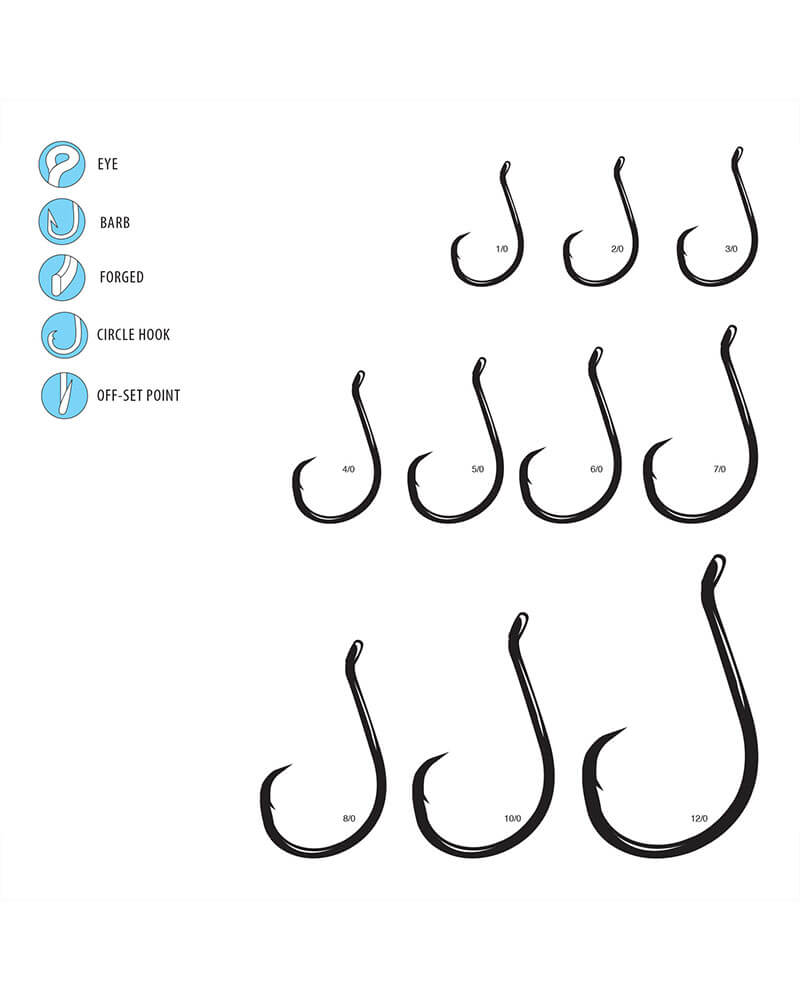Circle Hooks…….What, When, Where and Why?
Circle hooks are one of the most misunderstood and mis-used tools in an angler’s tacklebox. Part of the reason, at least on the east coast, is that circle hooks were first implement in the United States Pacific Northwest for longline fishing for species like halibut and tuna. Only in the past 25-30 years did interest arise in what was then a whole new concept. The circle hook popularity has continued to increase in the past decade. As a North Carolina fishing guide, using circle hooks was rare and for many anglers it can be confusing at times. However, as the concept continued to grow in popularity, so did a better understanding of its benefits and successful use.
There are many different circle hook options and choices for which is best for the fishing you’ll be doing. Factors such as hook size, gauge, offset, or non-offset are important to making the right selection. While this can be confusing at times, it is these factors that circle hooks are more effective than their predecessor, the basic hook design.
A true circle hook is made so the point is at a 90-degree angle or less to the shank of the hook. This design increases predictable hooksets in the corner of the jaw and makes it easier to remove the hook, preserving the life of the fish. But getting the right-size hook might play an even larger role in whether your bait swims naturally or the hook sets true.
The difference in sizing between manufacturers goes back to some of the original hook makers. Some base the size on gap size, while others base it on the overall length of the hook. This can be confusing when shopping and you may want to get help from your tackle shop staff. Another tip would be to make sure that you properly match your circle hook with the live bait you’re fishing with. Use a larger gage with larger bait, but not too big to kill it. However, anglers need to try to use the smallest bait possible to ingest the hook and bait.

Courtesy of Gamakatsu
Non-offset circle hooks have grown in popularity over the past years. These hooks are greater for fishing for bigger fish as well as bottom fishing and even trolling. Some circle hooks in this class even have offset eyes that work as a snelled connection to minimize gut-hooking the fish. A snelled hook will commonly drift back truer with the chum and leads to a good hookset.
Here’s a few factors that may help you in selecting the right circle hook:
· Circle hooks with wider gaps will provide hookup success. This why many billfish fishermen make them a part of their tournament fishing arsenal.
· Circle hooks with a short shank interfere far less with your bait presentation. The longer shank hooks should be used with larger baits.
· Make sure to have a variety of hook options for various species and situations.
You may be interested

Sight Fishing Like A Pro
Tim Wilson - June 19, 2025Sight fishing can be a rush when done right. It’s taking your inshore fishing to the next level with a dose of adrenaline. It requires great upper-level…

My Fishing Spot’s Better Than Yours…..Increase Your Your Hotspots
Tim Wilson - June 9, 2025Every angler has their favorite go-to spots—the kind of place where they landed great fish just a few months back. It might be a familiar dock or…

Pre-Planning For the Next Day’s Fishing Trip Like a Pro
Tim Wilson - June 9, 2025While many saltwater anglers just roll out of bed and head to the boat ramp, the top-notch fisherman has a different approach. It starts before the day…






